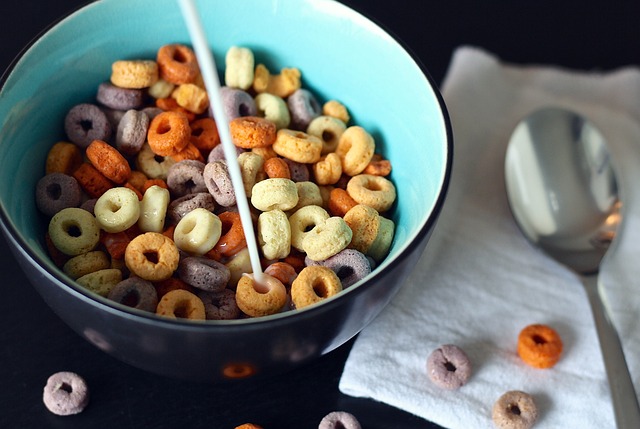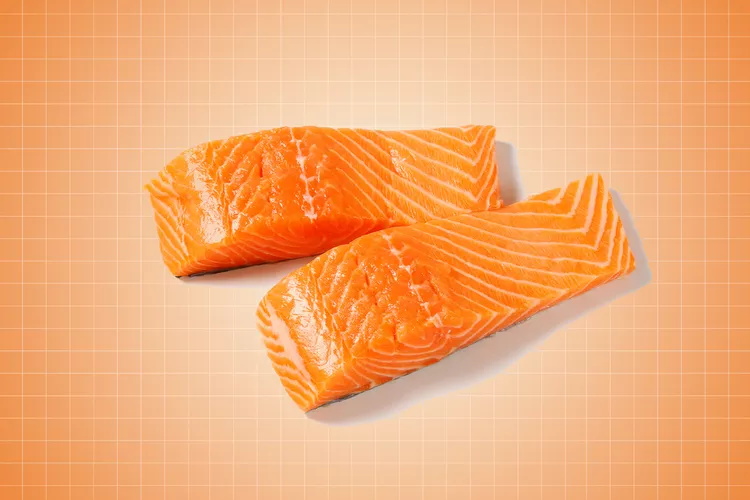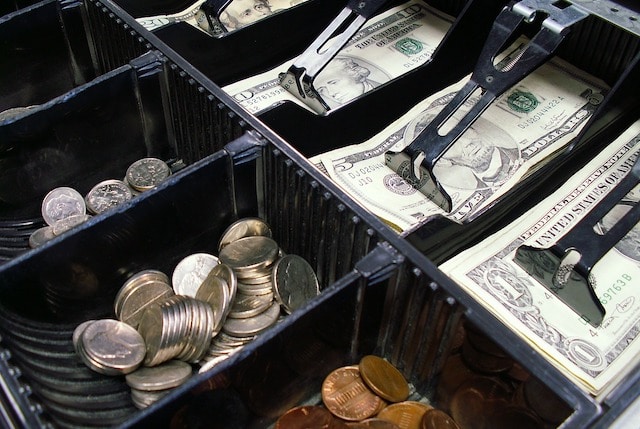10 Sneaky Psychological Tricks Stores Use to Make You Spend More
Most of us stroll through the grocery store without giving the experience much thought. But behind the neatly stacked produce and soothing background music lies a world of carefully engineered retail psychology. Grocery stores don’t just sell food — they design every detail to subtly influence your decisions.
From the scent of freshly baked bread wafting through the entrance to the strategic placement of impulse buys at checkout, every inch of the store is a marketing battlefield. These companies pour millions into research, market testing, and behavioral studies, all with one goal: to get you to spend more.
And while much of it is perfectly legal, it often toes the line of psychological trickery. It’s not just advertising — it’s environmental manipulation, and it works astonishingly well.
10. Grocery Stores Lead With Flowers and Produce to Trick Your Brain

Ever noticed how nearly every grocery store greets you with a burst of color and scent from the floral section, followed immediately by a vibrant display of fresh produce? It’s not a coincidence — and it’s definitely not because all store layouts are designed by the same lazy architect using copy-paste templates. This is intentional design based on human psychology, and grocery chains know exactly what they’re doing.
The goal? To make you believe everything in the store is fresher and more appealing than it might actually be.
Walking past fragrant flowers and lush fruits and vegetables primes your senses. It activates a subconscious association between freshness, quality, and trust. Even if the rest of the store is stocked with shelf-stable goods or less-than-fresh items, your brain has already been tricked into thinking, “This place is full of fresh, healthy stuff.”
And yes, stores invest in these floral displays even though flower sales are only significant around holidays like Valentine’s Day or Mother’s Day — because the illusion of freshness boosts overall spending. It’s a subtle trick, but it works.
9. Department Stores Hit You With Cologne First — On Purpose

While traditional department stores like Macy’s and JCPenney may be on the decline, they’re still fixtures in many malls — and they’ve had decades to master the art of subtle psychological influence. One of their oldest and most effective tricks? Starting your shopping experience with a wall of fragrance.
Think about it: almost every department store places the cologne and perfume counters right at the front. As soon as you walk in, you’re greeted with a strong, pleasant scent that fills the air. This isn’t just to advertise the fragrance selection — it’s a form of sensory priming.
That inviting aroma tricks your brain into associating everything inside — the clothes, the bags, even the prices — with cleanliness, luxury, and quality. You’re more likely to feel like you’re browsing through high-end, desirable items when your nose is surrounded by floral, citrusy, or musky notes. The jewelry section, usually nearby, only adds to that high-end atmosphere.
But here’s the kicker: that sensory overload can backfire. Many shoppers take a sample spritz of cologne or perfume and love it in-store, only to get home and wonder, “Why does this smell different?” That’s because department stores often have so many competing scents in the air — from other testers, customers, and sometimes even pumped-in ambient fragrances — that your sense of smell becomes confused.
It’s not necessarily deceptive — just another example of how stores use psychology to shape your shopping experience in ways you may not even notice.
8. Sugary Cereals Are Strategically Placed to Stare Directly at Your Kids

Breakfast cereal companies aren’t just selling food — they’re selling fun, trust, and morning routine loyalty. And when it comes to sugary cereals aimed at children, they’re not subtle about who their real target is. In fact, the cereal aisle might be one of the most deliberately manipulative spaces in the entire grocery store.
These brands pour millions into marketing every year — constantly updating packaging, inventing new flavors, and promoting the idea that the sugar-laden flakes are “fortified” with vitamins and minerals. But the real magic trick? They design entire strategies around your child’s eye level.
Walk through a cereal aisle in any major U.S. grocery store and you’ll notice a pattern: the colorful, sugar-packed cereals with cartoon mascots are exactly where your kid can see them — and look them right in the eye. It’s not a coincidence. Cereal companies work directly with retailers to secure shelf placement that’s intentionally geared toward children’s height, ensuring those wide-eyed, smiling mascots can lock in and start the sales pitch before you even notice.
From Tony the Tiger’s toothy grin to the Trix Rabbit’s excited expression, these mascots are crafted to look friendly, energetic, and — most importantly — trustworthy to a child. It’s no wonder kids tug on shopping carts to get closer.
This tactic is no secret. It’s openly used by brands that know exactly how powerful visual cues and placement can be, especially when combined with cartoon nostalgia and sugary cravings. It’s psychological marketing aimed at the youngest shoppers — and it works like a charm.
7. Baking Premade Loaves of Dough: The Illusion of Freshness in Grocery Store Bakeries

Have you ever walked into a grocery store bakery and been greeted by the mouthwatering aroma of freshly baked bread, or seen signs proudly advertising their “freshly baked” baguettes, bagels, or specialty loaves? Maybe you’ve even noticed the shiny bread slicer, ready to cut into a loaf that looks like it was made just for you. It’s a tempting display, designed to make you feel like you’re stepping into a cozy, artisanal bakery. But here’s the catch: much of what you’re seeing is an illusion.
If you’re truly craving fresh-baked goods, you might want to think twice before grabbing that loaf or cake from the grocery store. In reality, many of the baked items you see on display aren’t as fresh as they appear. The loaves of bread? They’re often frozen and then baked by employees on-site. Yes, that “freshly baked” baguette you’re eyeing might have been frozen for days—or even weeks. And it’s not just bread. Some cakes and other pastries are also pre-baked and assembled by staff, giving the illusion of homemade goodness.
But that’s not all. Grocery store bakeries are often more about presentation than actual baking. Take those beautifully decorated cakes with personalized messages, for example. They’re typically made from premade template cakes that are shipped in from an off-site commissary kitchen. The employees simply add the finishing touches—like frosting, sprinkles, or a custom message—to make them look appealing. While this might create the appearance of a bustling, fresh bakery, the truth is that most of the real baking happens far away from the store.
So, why does this matter? Well, if you’re someone who values truly fresh, homemade baked goods, it’s worth considering where your treats are actually coming from. The illusion of freshness might be convincing, but it’s not quite the same as biting into a loaf that was baked just minutes before you bought it.
If you’re craving that authentic bakery experience, you might want to explore local bakeries that focus on small-batch, handmade goods—or better yet, try baking your own! Check out these tips for baking your own bread or explore the world of artisanal baking. After all, there’s nothing quite like the smell and taste of something truly fresh from your own oven.
6. Most of the “Fresh” Fish in Stores Was Frozen First

When you see fish laid out on crushed ice in the seafood section, labeled as “fresh,” your brain likely makes a quick connection: Ah, this fish was caught recently and never frozen. That’s the assumption grocery stores want you to make — but the reality is a little fishier.
In truth, there’s a very good chance that nearly all the seafood you see labeled as fresh has been frozen at some point. It’s a subtle sleight of hand that plays off customer expectations. Unlike Wendy’s, which built an entire ad campaign around its “never frozen” beef, the seafood industry has learned to exploit the public’s vague understanding of what “fresh” really means.
Even if you’re shopping near the coast, where fresh catches are feasible, most fish — even the high-end stuff — is immediately frozen after being caught to preserve quality and prevent spoilage during transport. This quick freezing is done on the boat and is considered essential to keep the fish safe to eat by the time it hits your plate. Once it arrives at the store, it’s often thawed and placed on ice, dressed up to look freshly caught, even though it’s technically not.
What’s more, the definition of “fresh” fish isn’t strictly regulated in many places. In the U.S., the FDA allows seafood that has been frozen and then thawed to still be labeled as “fresh” — so long as it was handled properly.
In short, that pristine fillet you’re eyeing in the seafood section may have taken a trip through a deep freeze before making its way to your cart. It’s not necessarily bad or unsafe — but it’s certainly not as fresh as they want you to believe.
5. Stores Run Sales Knowing They Don’t Have Enough Stock

Retailers love to dangle a good deal in front of you — and they’ll go to great lengths to get you through the door. But sometimes, those flashy sales and limited-time offers are less about giving you a bargain and more about getting you to show up, even if they don’t actually have the item.
This tactic isn’t new. On big shopping days like Black Friday, stores used to promote “doorbuster” deals — items with eye-popping discounts — knowing full well they only had a handful of those products in stock. Legally, they’d protect themselves with a tiny disclaimer like “limited quantities available.” That was enough to avoid outright fraud charges, but frustrated shoppers caught on, and this practice has slowed down in recent years.
That said, grocery stores still pull similar stunts — just with a quieter approach. One of the most common tricks is advertising sales with no mention of limited supply, hoping you’ll come in only to find the product out of stock. Most shoppers don’t realize they can ask for a rain check — a voucher to get the same deal later when it’s back in stock. Stores count on this, betting you’ll either buy something else or forget about the deal altogether.
In the end, the goal isn’t always to sell the sale item — it’s to get you inside. Once you’re there, you’re more likely to buy something, whether it’s the deal you came for or not. Just another reason to shop smart and read the fine print.
4. IKEA Designs Its Stores Like a Maze to Make You See Everything

If you’ve ever wandered through IKEA, you know it’s not like your average store. The layout doesn’t let you zip in, grab what you need, and leave. Instead, you’re guided through a carefully planned labyrinth — and that’s no accident.
IKEA has built an empire on affordable, build-it-yourself furniture, but their real genius might lie in how they make you shop. Most locations are intentionally built far from city centers, turning every trip into a mini road trip. By the time you arrive, you’re committed — and IKEA knows it.
Once inside, you’re funneled through a one-way path that winds through staged living rooms, kitchens, bedrooms, and beyond. This “fixed path layout” is specifically designed to make you see every single product, even ones you had no intention of buying. It’s not just clever — it’s psychological. By exposing you to a wider variety of items, IKEA increases the odds of impulse buys.
And just when you’re worn out and starting to feel hungry, guess what? You’re nowhere near another restaurant — but IKEA’s café is right there waiting with cheap meatballs and familiar comfort food. It’s perfectly placed to keep you in the store even longer.
It’s all part of a carefully crafted experience designed to maximize the time you spend browsing, which usually means maximizing how much you spend.
3. Many “Sale” Prices Are Crafted Illusions, Yet People Crave the Deception Anyway

We’re all suckers for a good sale, and retailers are well aware of this fact. That’s why they’re constantly bombarding us with advertisements touting their latest discounts. During the holiday seasons, the floodgates really open, and it seems like everything is on sale. We love the feeling of getting a bargain, as if we’ve outsmarted the system, while the retailers are raking in the cash. But, here’s the kicker: a lot of these supposed “sales” aren’t really sales at all. And the retailers? They know exactly what they’re up to. Welcome to the world of capitalism!
Picture this: you stroll into a store, and there it is – a shiny sign announcing a “sale” on your favorite item. You might think that this means the store is offering you a temporary discount, a break from the regular price to entice you to buy during slow times or to capitalize on busy periods. But reality is often stranger than fiction. In truth, many stores are practically always “on sale,” and those sale prices? They’re often the prices the retailers intended you to pay right from the get-go.
Now, before you grab your virtual pitchforks and storm the virtual gates of Big Retail, let me tell you a story. Remember JCPenney? Their CEO once had a brilliant idea: do away with all the fake sales and offer everyday low prices instead. Sounds like a win-win, right? Wrong. The backlash from consumers was nothing short of legendary. It turns out that people love the thrill of the chase, the excitement of finding a “good deal,” even if it’s all an illusion.
This phenomenon isn’t just a minor quirk of consumer behavior; it’s a full-blown psychological tick. Retailers understand this, and they exploit it to the hilt. They know that we’re more likely to buy something if we feel like we’re getting a deal, even if that deal was carefully orchestrated to make us think we’re saving money when, in fact, we’re paying exactly what they wanted us to all along.
The next time you’re tempted by a “sale,” take a moment to think about what you’re really getting into. Is it a genuine bargain, or just another clever ploy to get you to part with your hard-earned cash? And remember, if you ever find yourself feeling a bit skeptical about those sale prices, you’re not alone. You’re just one of the many consumers caught in the web of retail psychology and consumer behavior.
For more insights into the fascinating world of retail and consumer psychology, be sure to check out our related articles on Retail Strategies and Consumer Behavior Explained. And while you’re at it, why not explore our tips on how to Make Smarter Shopping Choices and avoid falling prey to these clever marketing tactics?
2. “Best By” Labels Are Often Just Clever Marketing Tricks

Ever looked at a package in your pantry and tossed it because it was past the “best by” date? You’re not alone — and that’s exactly what the manufacturers want. Despite what many people believe, “best by,” “sell by,” and “use by” labels rarely indicate food safety. In most cases, they’re simply about quality, not whether a product is safe to eat.
These vague labels are part of a subtle tactic to encourage more frequent purchases. A “best by” date usually means the company believes the product will start to lose its peak flavor or texture after that point — not that it’s expired or dangerous. It’s more about maintaining their brand image than protecting your health.
Even more eye-opening is the fact that, in many countries — including the U.S. — these labels aren’t federally regulated (except for baby formula). That means companies can create these dates based on internal testing, marketing strategies, or even just rough estimates. And grocery stores? If they package meat or baked goods themselves, they’re legally allowed to print their own expiration labels — and yes, they can change them too.
At the end of the day, “best by” labels are more about protecting company reputation and boosting sales than helping you make smart choices. So next time, trust your senses before tossing that snack — your nose might be more honest than the label.
1. Stores Deliberately Shift Products to Entice You into Buying More

This is a common grouse among shoppers, and it’s enough to drive anyone up the wall. Chances are, you’ve been in this situation: you walk into your local grocery store, only to find that it’s been completely reorganized. You have to retrace your steps, figure out where everything has gone, and it can be really frustrating. You might ask the employees for help, but they often seem as clueless as you are. And in the back of your mind, you can’t help but wonder if this is all some devious plan by the store to get you to spend more money.
Well, here’s the thing: the conspiracy theorists are right on this one. Grocery stores regularly rearrange their products for a reason. They want you to forget where you usually find things. You see, by doing this, they hope that you’ll stumble across products that you might have overlooked before. Maybe you’ll discover a new brand or a different version of something you usually buy. And, ideally for the store, this will lead you to spend more money.
It’s a tactic that’s widely disliked by customers, but it seems to be effective for the grocery stores. After all, they keep doing it. So, the next time you find yourself in a reorganized store, just remember that it’s all part of their strategy to get you to buy more.

























